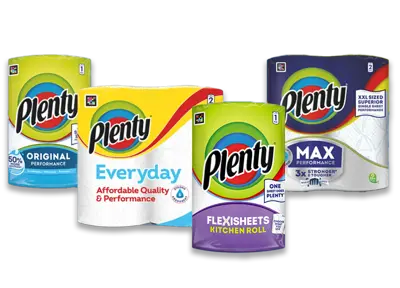
Water is essential to life and to the planet. However, water stress is a worrying issue that is affecting regions and people over the world. What is water stress? Understanding what water stress, or shortage of water is, its causes, consequences, and the things we can do to limit its impact is necessary to protect people and the planet. Keep reading to find out more about water stress.
What is water stress? Definition
We talk about water stress to refer to situations where the demand for usable, safe water exceeds its availability.1 While Earth is made of 70% of water, only 3% is considered fresh water (water that is not salty), and 0.5% of this fresh water is available for us to use. The rest is too polluted or can’t be accessed – it could be locked up in glaciers, or too far under the earth’s surface, for example.2
We talk about physical scarcity when an area suffers from a physical shortage of water. Water stress can also refer to an economical scarcity, when there is enough water, but not enough means and infrastructure to retrieve it or treat it to make it usable.3
Water stress is a shortage of water that has a significant impact on communities, as they are no longer able to meet their water needs.4 Currently, 25 countries are facing increased shortages of water each year, and around 2 to 3 billion people live under water-stressed conditions for at least one month a year.5,6 Water stress is therefore an urgent crisis that needs to be acted on.
Causes of water scarcity
What exactly causes water stress? There are different causes of water scarcity:
- Lack of infrastructure. Water supplies need to be managed in order to stay clean and easily accessible to people. Unfortunately, some countries lack the infrastructure to do this.7
- Water waste. Water is being wasted daily, and more than we realise. From dripping faucets and water taps being left on, to lawns being overwatered, as well as water waste during agricultural production, these things accumulate, and result in the waste a significant amount of water.7,8
- Water pollution. When water is too polluted, it becomes unusable, which can cause water scarcity.9
- Climate change. Climate change is one of the main factors that causes water stress. Some areas suffer from a lack of rainfall and extended drought.10 Moreover, with the climate change crisis, dry regions are expected to become even drier, which could make water scarcity worse in these regions.11
Impacts of water insecurity
The impacts of water insecurity, or stress, are multidimensional and can result in health, economic, and social issues.
For instance, communities facing water stress often struggle with health issues due to unsafe water and poor sanitation.11 As agriculture relies heavily on water, food production can also be affected by water scarcity.12 Water shortage also has social implication. It can accentuate inequalities, as vulnerable people with fewer resources or from developing countries are more likely to be affected by water scarcity.13 The effects of water shortage are also seen on the environment: rivers and lakes are an important part of the ecosystem, but have become stressed because of pollution.13
Solutions to water scarcity: what can we do to help?
So, is there a way to limit water stress? The answer is, yes! There are some solutions to water scarcity that everyone can work towards. They range from simple, everyday actions at home, to encouraging larger-scale policy changes. Here is how to help water scarcity:
- Reducing water consumption and waste at home. Simple everyday actions like fixing leaks, using water-efficient appliances (such as low-flush or dual-flush toilets), adopting water-saving habits like turning the tap off while brushing your teeth and taking showers instead of baths can make a big difference. We can all contribute to reducing the shortage of water by being more mindful of our water usage at home! After some more tips? Check out our 6 top tips for saving water at home.
- Rainwater harvesting. Rainwater can be a good water supply. Collecting and storing it for use in gardens and to water your indoor plants is a great way to make the best of the natural resource!
- Supporting sustainable agriculture. Since agriculture is a major water user,8 supporting sustainable agriculture, that uses efficient irrigation techniques and drought-resistant crops can help reduce water usage.14
- Supporting sustainable businesses that use water responsibly. Businesses use water in their supply chain, and they have a social responsibility to do it in a way that alleviates water stress.15 At Plenty, we strive to reduce our water use in the production of our kitchen roll, by focusing on improving our water management, and by cleaning all of the water we use in production and returning it to the system.
- Protecting water sources. Keeping rivers, lakes, and aquifers clean and free from pollution is crucial to alleviate water scarcity. This can be done by supporting water protection initiatives, and through individual actions, such as being mindful of what you pour down your sink.
- Education and awareness. Educating ourselves and the people around us, as well as raising awareness about the causes and effects of water stress is how we can bring everyone together to care for the issue, and take action. Let’s fight water scarcity together, for a happier and healthier community and planet!
Understanding and addressing water stress is a shared responsibility. Individuals and businesses can work together to strive to reduce water scarcity. By learning about water scarcity, its causes, effects, and the solutions to water stress, we help care for our communities and planet. Remember, every drop counts, and each of us can work towards ensuring that water is available to all.
How are we getting involved?
At Plenty, we prioritise caring for both our customers and the environment. That’s reflected in our operations and in our products. Take Plenty Flexisheets kitchen roll. With more perforations on the roll, you can choose the exact amount you need, and with 250 Flexisheets per roll, Flexisheets give you more kitchen roll and less waste.
Voted Product of the Year 2024*, Flexisheets are tubeless! This seemingly small change can have a surprisingly large knock-on effect. For example, with 13 million less cores, that’s 235 fewer lorries on the road, a 6% carbon footprint reduction, as well as 12 thousand fewer pallets needed.** Flexisheets also have an increased post-consumer recycled plastic packaging content of 33% and comes with less plastic*** in the packaging.
*Winner General Household Category. Survey of 8,000 people in UK & ROI
**Compared to Plenty Original 1R
*** Data based estimated 1st year of launch, based on 2r equivalent paper. Carbon Footprint Essity LCA Analysis Nov 2021.
Sources:
1 European Environment Agency, “Water stress”
2 World Resources Institute, “Aqueduct”
3 Council on Foreign Relations, “What causes water scarcity”
4 Council on Foreign Relations, “Water stress: a global problem that’s getting worse”
6 UNESCO, “UN World Water Development Report 2023”
7 Concern Worldwide US, “Ten causes of the global water crisis”
8 Schroders, “Why agriculture holds the key to tackling water waste”
9 National Institute of Environmental Health Sciences, “Safe water and your health”
10 Earth.org, “Water shortage: causes and effects”
12 Council on Foreign Relations, “What are its impacts on public health and development?”
13 Foresight, “Water equality: figures and data that explore the global gap”
14 World Wild Life, “Sustainable agriculture”
15 We Are Water Foundation, “Companies and water: the new social responsibility”
Related articles
2 easy ways to make homemade musical instruments for kids
Looking for easy ways to have fun with your kids while teaching them how to recycle? Learn how to make musical instruments from waste material.

Why is my cat being sick? Symptoms, causes, and solutions
“Why is my cat sick?” Learn about the signs of illness in cats, the reasons why your feline friend might be sick, and how to treat a sick cat at home.

How to save money at home: simple saving tips and budgeting tips
Looking for simple ways to save money at home? Follow our budgeting tips and saving ideas to help you save money and provide more for your loved ones!

How to speed up composting: 10 hacks to accelerate your compost
Are you looking for ways to speed up your compost? Discover how to accelerate compost with our 10 hacks. Accelerating your compost has never been easier!

What to do with leftover food: creative ways to use food leftovers
From leftover chicken ideas, to what to do with leftover rice, find out how to get the most from your food leftovers.

How to save money on food shopping with eco-friendly shopping tips
Want to know how to save money on groceries and how to shop sustainably at the same time? Look no further than our top tips.


